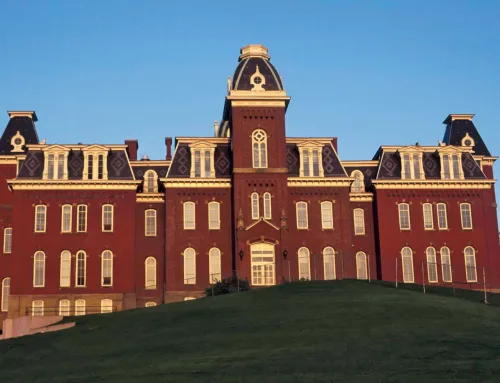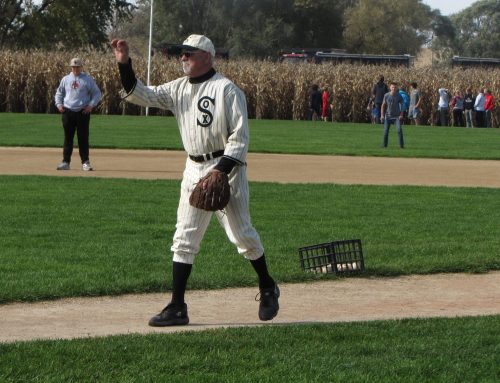No song better captures the terrifying power of the Great Lakes than Lightfoot’s tragic, captivating rendering. It is a sonic and literary achievement, translating the sudden confusion, fear, and despair as the Edmund Fitzgerald is unable to weather a November storm.
By Jonathan Dale
Gordon Lightfoot, the Canadian folk singer and songwriter, passed away on May 1st, 2023. He was 84 years old.
Lightfoot rose to fame in the 1960s for his poignant songwriting. “Ribbon of Darkness,” recorded by country-western singer Marty Robbins, went to number #1 on the country charts in 1965. “Early Mornin’ Rain,” a beautiful tune as narrated by a lonely man watching planes take off, has been recorded by Elvis Presley, Bob Dylan, and Judy Collins. Peter, Paul and Mary’s version charted on the Billboard Hot 100.
But his biggest hit was a historical ballad. And while a dirge for a doomed ore-carrying lake freighter and its crew might seem niche, “The Wreck of the Edmund Fitzgerald” was a massive hit, reaching number two on the Billboard Hot 100 in 1976. The single succeeded in spite of its six-minute runtime, a relative lifetime compared to the usual two and a half minute-long radio single.
No song better captures the terrifying power of the Great Lakes than Lightfoot’s tragic, captivating rendering. It is a sonic and literary achievement, translating the sudden confusion, fear, and despair as the Edmund Fitzgerald is unable to weather a November storm. Lake Superior is an inland sea, and “Edmund Fitzgerald” serves as its melancholy, lyrical testament.
Gordon Lightfoot was born in 1938 in Orillia, a southern Ontario town roughly equidistant between Lakes Huron, Erie, and Ontario. In a 1976 review of “Edmund Fitzgerald” in The Chicago Tribune, Gordon’s sister and manager Bev explained that Gordon was fascinated by the Great Lakes– “We grew up in Orillia, Ont., which is right by [Lake Huron’s] Georgian Bay,” Bev said. “He’s had his eye on the big vessels for years.” He took part in the annual Port Huron to Mackinac yacht races– a 1979 profile in Yachting Magazine detailed Gordon’s purchase of Golden Goose, a custom-built 45-foot wooden “cruising sloop” to replace his old one. Throughout his life, Gordon Lightfoot seemed preternaturally drawn to the fresh water of the Great Lakes.
So, it doesn’t seem surprising that, as the story goes, he read about the Edmund Fitzgerald’s demise in the news and was drawn to write about it.
“Edmund Fitzgerald” remains, nearly 50 years later, the preeminent cultural touchstone for the Great Lakes’ industrial history, providing a recognizable face to the decades of mining and shipping that has shaped the land and its people.
Iron ore and copper in the Lake Superior region were discovered by American colonists in the 1840s. The region became economically connected to the rest of the country after the completion of the Soo Locks in 1855, which provided a cheap water route from mine to mill. But those ore deposits took on added importance during the Civil War, when demand for wartime supplies was so high it catalyzed mining in the Upper Peninsula and Minnesota. By the time the Edmund Fitzgerald left the Superior, WI in 1975, it was filled with taconite, a low-grade iron ore formed into pellets (Minnesota remains the leading producer).
While the series of constructed canals and locks made water transportation efficient, it certainly wasn’t a safe enterprise. And whatever number of shipwrecks you think probably happened on the Great Lakes, the real answer is much, much larger. The Great Lakes and their maritime history can be explained partially by the ships that lie deathly quiet at the bottom of their beds.
In 2021, the NOAA designated a National Marine Sanctuary on a stretch of Lake Michigan which they dubbed “Wisconsin’s Shipwreck Coast.” As Susan Lampert Smith wrote about for Belt Magazine, “The sanctuary highlights the Great Lakes’ rich history as a maritime highway, which stretches from the fur trading era through the Underground Railroad and the building of the industrial Midwest.” Similarly dangerous coastlines, with high concentrations of shipwrecks, also exist in Lake Huron and Lake Superior.
As drummer Barry Keane described in a 2022 interview, they recorded “Edmund Fitzgerald” on a whim. Lightfoot had been playing the chord progression over and over, viewing it only as a rough draft of a future song. But the band had unused studio time at the end of their Summertime Dream sessions, and convinced Lightfoot to try recording “the shipwreck song.”
They hadn’t rehearsed the song in full yet, so when tapes ran, the band were playing it together for the first time. “Gordon gave me a nod around the third verse, I did a drum fill and came in and played,” said Keane. We all played what we felt. And we played ‘til the end of the song. We had never heard the song.” And the band got it right the first time– that improvisatory take was the version Lightfoot would end up releasing.
Someone quickly made the correct observation that “The Wreck of the Edmund Fitzgerald” wasn’t a rough draft, but was, in fact, a hit record. And while there are many reasons the song became a hit, the first is Lightfoot’s reverential, awe-inspired vocals. Through his writing, Lightfoot synthesizes hundreds of years of history, from the native Ojibwa to European expansion, balancing life and death and legacy, all on a fast-sinking ore boat in a biblical squall.
Lake Superior becomes a gothic nightmare: its hurricane-force November gales are its “witches”, with cold and deadly ice water mansions lying below the surface. Gord wasn’t just affected by the story of the shipwreck, he was the perfect spokesperson because understood the power of the Great Lakes, that they held both real danger and poetic beauty.
And the backing band is able to help deliver the treacherous scene Lightfoot sings about. The iconic lead guitar melody is like a distress signal, a siren trying to rise above the storm’s foggy shroud, while a steel guitar mimics the lake’s killing gales. In the fourth verse, a synthesizer enters the mix, trilling a bright, unsettling arpeggio as the captain announces the ship is taking on water. Each instrument adds to the song’s impressive, palpable tension.
The Edmund Fitzgerald sank seventeen miles from Whitefish Point on the Superior side of the Upper Peninsula. Today, Whitefish Point is the site of the Great Lakes Shipwreck Museum. As Bruce Lynn, executive director of the museum told the Detroit Free Press after Lightfoot’s death, “If it wasn’t for him, and it wasn’t for his song, the awareness of the Fitzgerald wouldn’t be what it is now…It’s the No. 1 reason why people come up to the museum.”
Gordon Lightfoot became a bona fide star in his native country of Canada. But in Minnesota and Michigan, or any town where sons and daughters of mariners ring memorial bells, Lightfoot was a legend too. “Wreck of the Edmund Fitzgerald” provided visibility and dignity to the thousands of people who have lost their lives sailing through the Great Lakes and its often sudden, temperamental storms. He was a poet of the Great Lakes. He grew up near them, sailed their waves, and was able to tell a story that mattered to people who had never even heard of Duluth. His legend will live on.
Jonathan Dale is a freelance writer from Chicago with work in South Side Weekly and the Chicago Reader. You can find him on Twitter @dalejondale.






